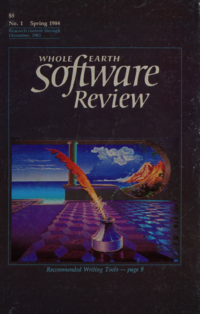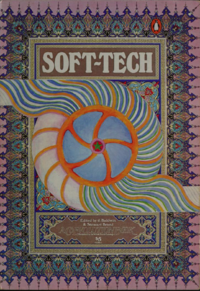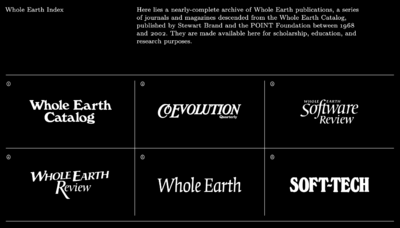Whole Earth Index
Description
Here lies a nearly-complete archive of Whole Earth publications, a series of journals and magazines descended from the Whole Earth Catalog, published by Stewart Brand and the POINT Foundation between 1968 and 2002. They are made available here for scholarship, education, and research purposes. The Whole Earth Catalog was an American counterculture magazine and product catalog published by Stewart Brand several times a year between 1968 and 1972, and occasionally thereafter, until 1998. The magazine featured essays and articles, but was primarily focused on product reviews. The editorial focus was on self-sufficiency, ecology, alternative education, “do it yourself,” and holism, featuring the slogan “access to tools.”
Reflection
Whole Earth published a number of singular publications throughout its run focused on topical themes, or containing content from aligned organizations. Often these volumes reprinted articles from prior Whole Earth perodical journals, supplemented with new content. And, while the entire archive is insightful and lives up to its “access to tools, ideas, and practices” byline, side projects like 'The Whole Earth Software Catalog' deserve special attention. Originally proposed by John Brockman as a magazine which “would do for computing what the original had done for the counterculture: identify and recommend the best tools as they emerged”, it seems to have been to ahead of its time. The first issue was released in the Fall of 1984. The Whole Earth Software Catalog was a business failure, however, and was only published twice, with only three of the Whole Earth Software Review supplements published. If we were to position this publication in the here and now, it would most likely belong to the niche digital networks that are sprouting from spaces such as are.na and the handmade web.
Quote
"Soft Tech is a term we’ve used and defended since the late sixties. Soft signifies that something is alive, resilient, adaptive, maybe even lovable."
Added on
04.09.24



